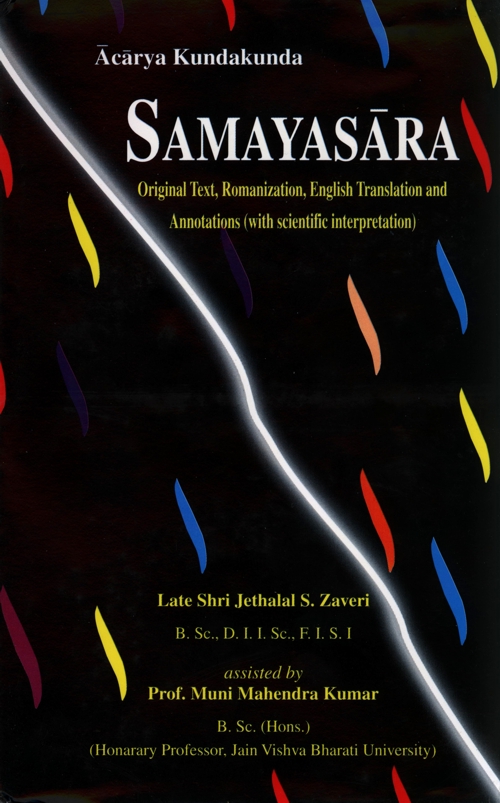
jadi jῑvo ṇa sarῑraṃ titthayarāyariyasaṃthudῑ ceva.
savvā vi havadi micchā teṇa du ādā havadi deho.. 26

Vavahāraṇao bhāsadi jῑvo deho ya havadi khalu ekko.
ṇa du ṇicchayassa jῑvo deho ya kadāvi ekkaṭṭho.. 27
[A disciple raises a query-] (Jadi) If, as stated, (jῑvo ṇa sarῑraṃ) the soul is not the body, (titthayarāyariyasaṃthudῑ) then worship of tῑrthaṅkaras and ācāryas (savvā vi micchā havadi) serves no purpose at all; (teṇa du) and so in my opinion (ādā) the soul (deho ceva havadi) is identical with the body.
The Ācārya offers a solution–(Vyavahāraṇao bhāsadi) vyavahāra naya-the empirical view-holds that (jῑvo deho ya khalu ekko havadi) the soul and the body is, surely, a unity; however, (ṇicchayassa du) according to the niścaya naya i.e., the ultimate truth is that (jῑvo deho ya na kadāvi ekkaṭṭho) the soul and the body can never be identical [because they are made of different substances].
Annotations:
In the former verse, a hypothetical query is raised by a junior disciple who is not well versed in the methodology of nayavāda. The disciple holds the common experience of the psycho-physical unity as the absolute truth and naively asks "if a tῑrthaṅkara or an ācarya is not the body, why do we worship them? Isn't it futile to worship the body when it is not the soul? Then the Ācārya patiently explains the truth in accordance with the proved methodology of nayas.
The basic principle of this methodology is that nothing is ever absolute. Non-absolutist Jains view each problem from two angles (i) the empirical and (ii) the transcendental. Neither of them is capable of yielding the whole truth. Each angle asserts its views with a qualification i.e. as a partial or relative truth without rejecting the view of the other angle.
Few questions have more constantly irritated the philosophers than that of the relation between the body and the soul.
It is a matter of common experience that a living being is an organic unity, and, if there are two constituents viz., the body and the soul, both are inseparably integrated as an organism. This, therefore, is the truth according to the empirical view (vyavahāra naya). But is that the ultimate truth? Vyavahāra naya is not at all concerned with the ultimate questions and it does not make any effort to answer these questions. The view which is concerned with the ultimate questions is the niścaya view which does not reject the revelations of the vyavahāra but asserts that as far as the ultimate or the transcendental truth is concerned, the soul is jῑvastikāya—a non-material substance without any sense data but with consciousness as its characteristic, while the body is pudgalastikāya—matter, a substance possessing sense data of touch, taste, etc. The two substances are eternal and mutually unconvertible. We shall have occasion to discuss various psycho-physical hypothesis more elaborately in a subsequent chapter. The Ācārya continues to expound the true position regarding the worship of tῑrthaṅkara etc. in the succeeding verses.
 Jethalal S. Zaveri
Jethalal S. Zaveri
 Prof. Muni Mahendra Kumar
Prof. Muni Mahendra Kumar

